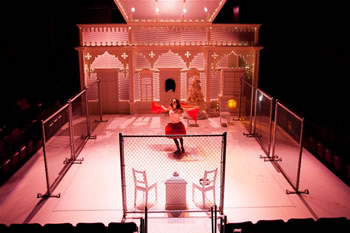One of the ways in which Greensboro thrives artistically is by involving the general public in the arts. There are many opportunities to hear concerts by community groups – the Philharmonia of Greensboro, is one of these institutions. Saturday night’s program, conducted by Robert Gutter, offered a wide variety of programming that, in the end, gave the orchestra a chance to show that even community orchestras can play difficult music with a reasonable degree of success.
The first work offered was one of Brahms’ two concert overtures. In this case, it was the “Academic Festival Overture,” written after Brahms had received an honorary degree. Unusual for Brahms, it uses a rather large orchestra, including contrabassoon, tuba, and an expanded percussion section. This particular performance left a little to be desired. The performance got off to a rather tepid start, with the strings not quite together. However, the committed playing and conducting was at a very high level, and it was clear that the orchestra had quite a lot of fun with Brahms’ small masterpiece. I have to give praise to the brass for their athletic delivery of Brahms unusually boisterous writing for them; it’s always fun to hear a composer step out of his or her normal style. The piece was warmly received by the audience.
It’s always a treat to hear a pianist who can really bring the music of Hungarian pianist-composer Franz Liszt to life, as soloist Vincent van Gelder did with Liszt’s single movement work for piano and orchestra, Totentantz, or “Dance of Death.” This concerto-esque opus is based on the Latin chant “Dies Irae,” or day of wrath. Like much of Liszt’s work, this was written as a vehicle to show off Liszt’s stupendous technique. In this performance, van Gelder did a wonderful job of reining in the bombast that Liszt wrote into his score, and made the work into an almost high quality job. I found myself admiring the keyboard work far more than the orchestral accompaniment, as Liszt was a far better composer for piano than orchestra.. However, I ultimately ended up liking the piece because the enthusiasm was there, and I was won over by it.
Following the Liszt was Richard Addinsell’s Warsaw Concerto, composed for the 1941 film Dangerous Moonlight. This single movement work was written in a style very, very imitative of Rachmaninoff. (I could have sworn that the composer borrowed a few lines from the second or third piano concertos.) Music Director Gutter related that it was the intention of the film studio to use Rachmaninoff’s music but he would not allow it, so this is the work that came out of the situation. As in the Liszt, I appreciated Mr. van Gelder’s attempt to not make more of it than it actually was – a ten minute stretch of Hollywood schmaltz and glitter. There was a standing ovation for both pianist and orchestra following the performance.
After intermission was Tchaikovsky’s Second Symphony, known as the “Little Russian.” Tchaikovsky’s early symphonies are not widely known or played, so this was an uncommon opportunity to hear the work. All of the elements of the master who would write the Fourth, Fifth, and Sixth symphonies were certainly apparent – the lush orchestration, the use of folk song, and the contrast of emotion. The work presented a serious challenge for the orchestra, but it was clear that they enjoyed playing the piece. A warm ovation at the end brought the evening to a close.












